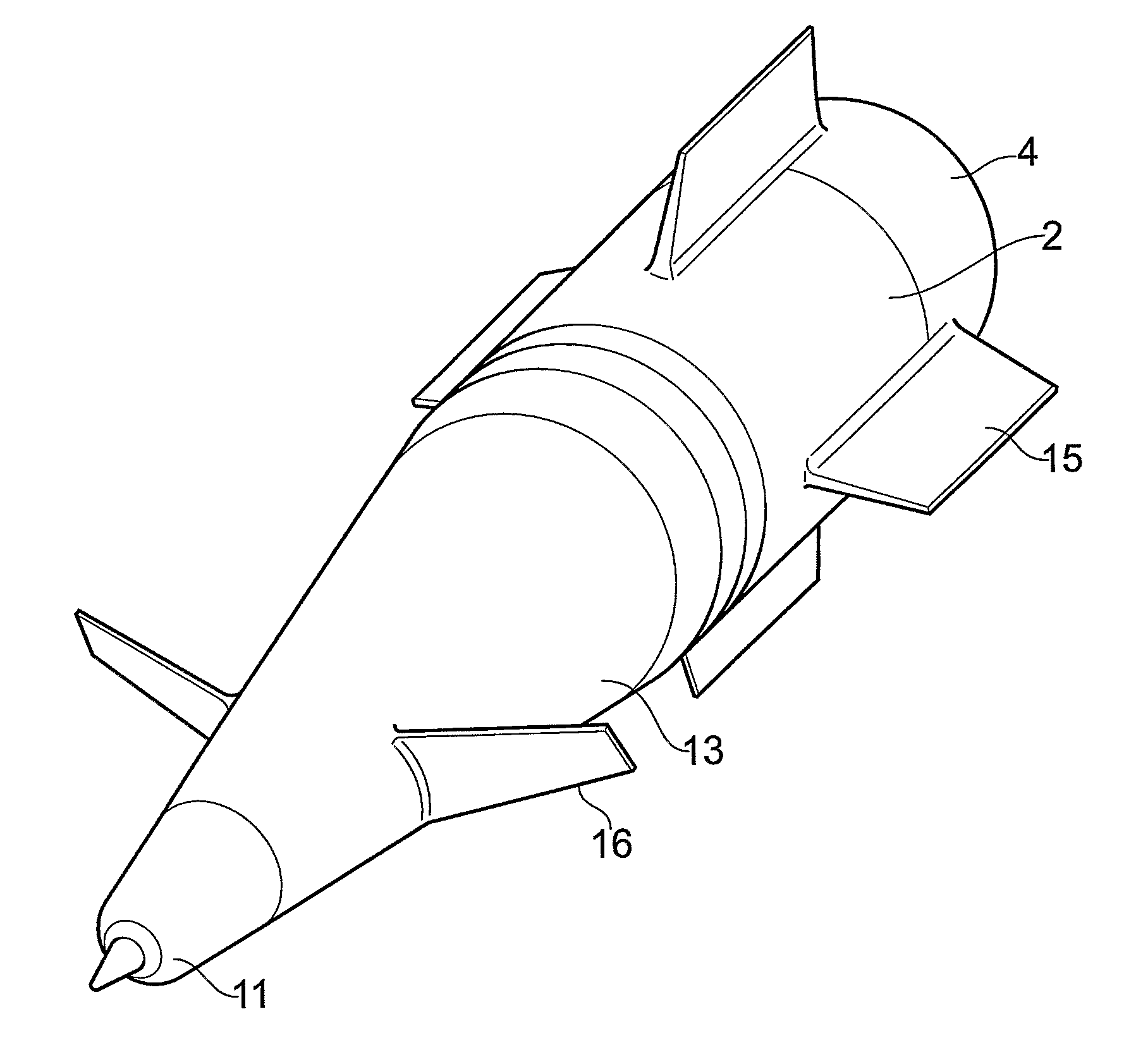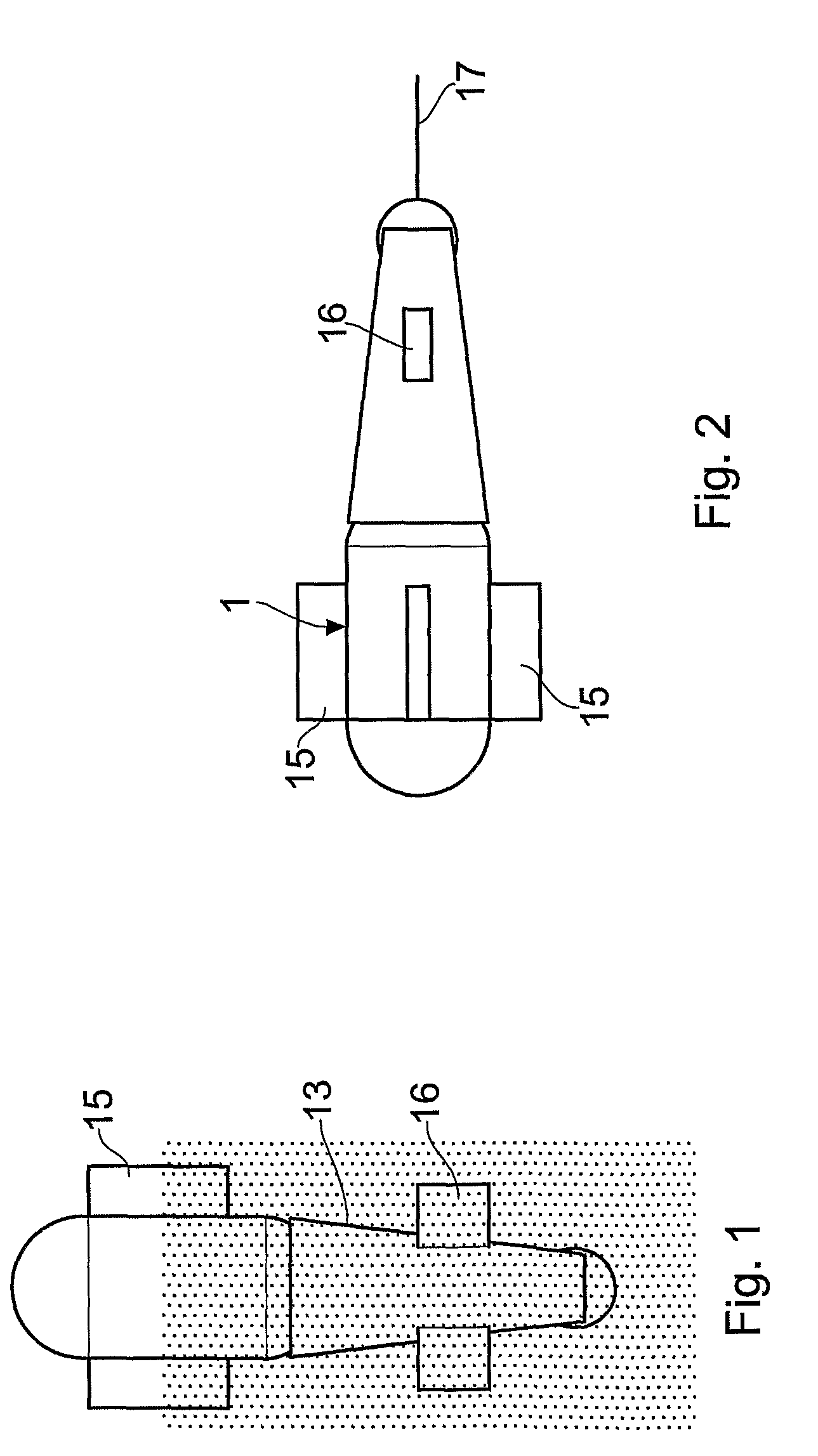Buoy
a technology of buoys and buoys, applied in the field of buoys, can solve the problems of not being able to completely submerge the buoy, and the downward force is not enough, so as to reduce the angle of inclination, reduce drag forces, and smooth rounded profile
- Summary
- Abstract
- Description
- Claims
- Application Information
AI Technical Summary
Benefits of technology
Problems solved by technology
Method used
Image
Examples
Embodiment Construction
[0016]The buoy illustrated in FIG. 1 comprises a float chamber 1 containing electrical equipment for transmitting and receiving radio signals. The float consists of a cylindrical member 2 closed top and bottom by a hemispherical cap 4, 3 so as to form a robust pressure vessel. The internal equipment includes an antenna 5 located at the upper end of the float 1 within the upper hemispherical cap 4; the cap 4 acts as a radome.
[0017]A rod 6 is connected to the lower hemispherical cap 3 and projects downwardly from it coaxially with the float 2 and carries a mass 7 at its lower end. The purpose of the mass 7 is to lower the centre of gravity of the buoy so that it is below the centre of buoyancy and thereby increases the surface stability of the float. This arrangement is illustrated schematically in FIG. 5, which shows the centre of gravity 8 and the centre of buoyancy 9. The magnitude of the mass is selected in relation to the mass of the other components of the buoy, but the overall ...
PUM
 Login to View More
Login to View More Abstract
Description
Claims
Application Information
 Login to View More
Login to View More - R&D
- Intellectual Property
- Life Sciences
- Materials
- Tech Scout
- Unparalleled Data Quality
- Higher Quality Content
- 60% Fewer Hallucinations
Browse by: Latest US Patents, China's latest patents, Technical Efficacy Thesaurus, Application Domain, Technology Topic, Popular Technical Reports.
© 2025 PatSnap. All rights reserved.Legal|Privacy policy|Modern Slavery Act Transparency Statement|Sitemap|About US| Contact US: help@patsnap.com



